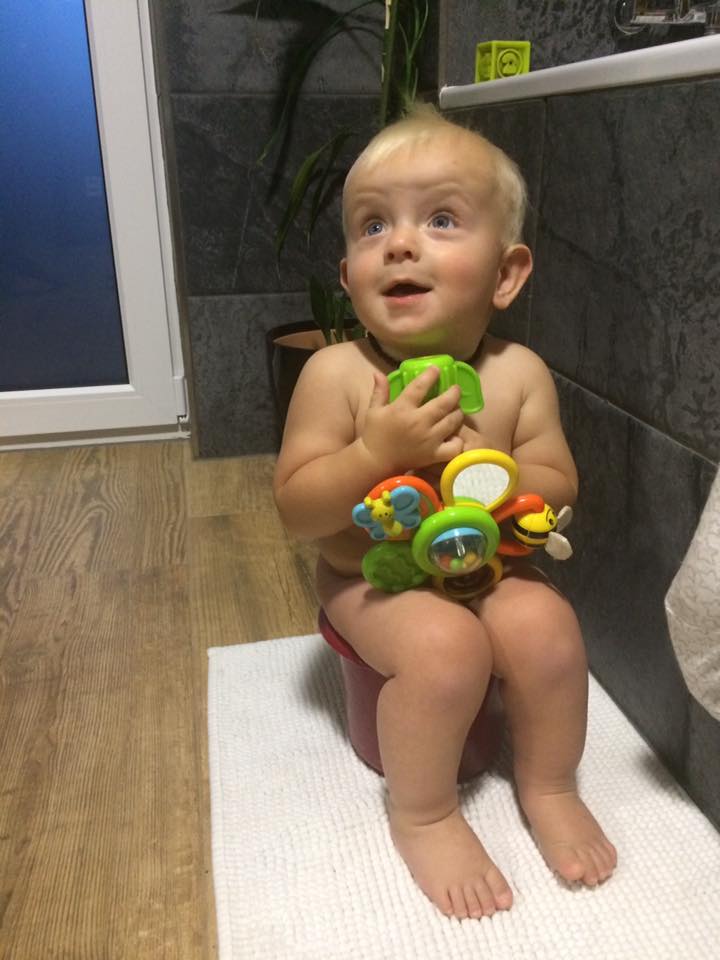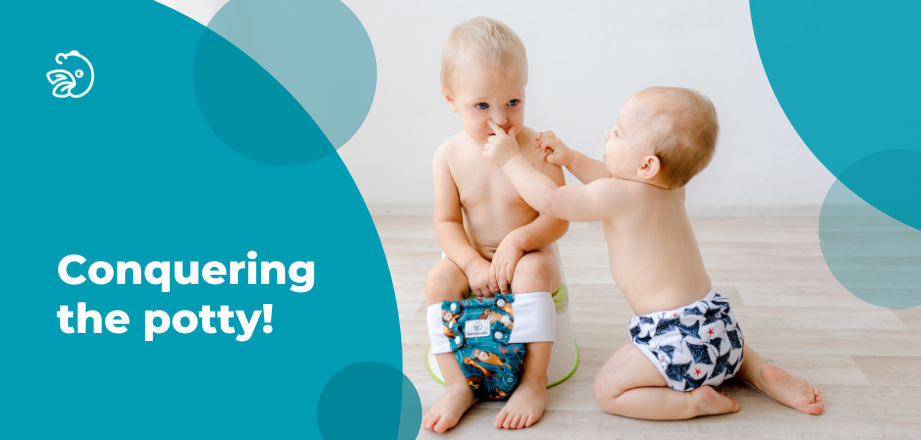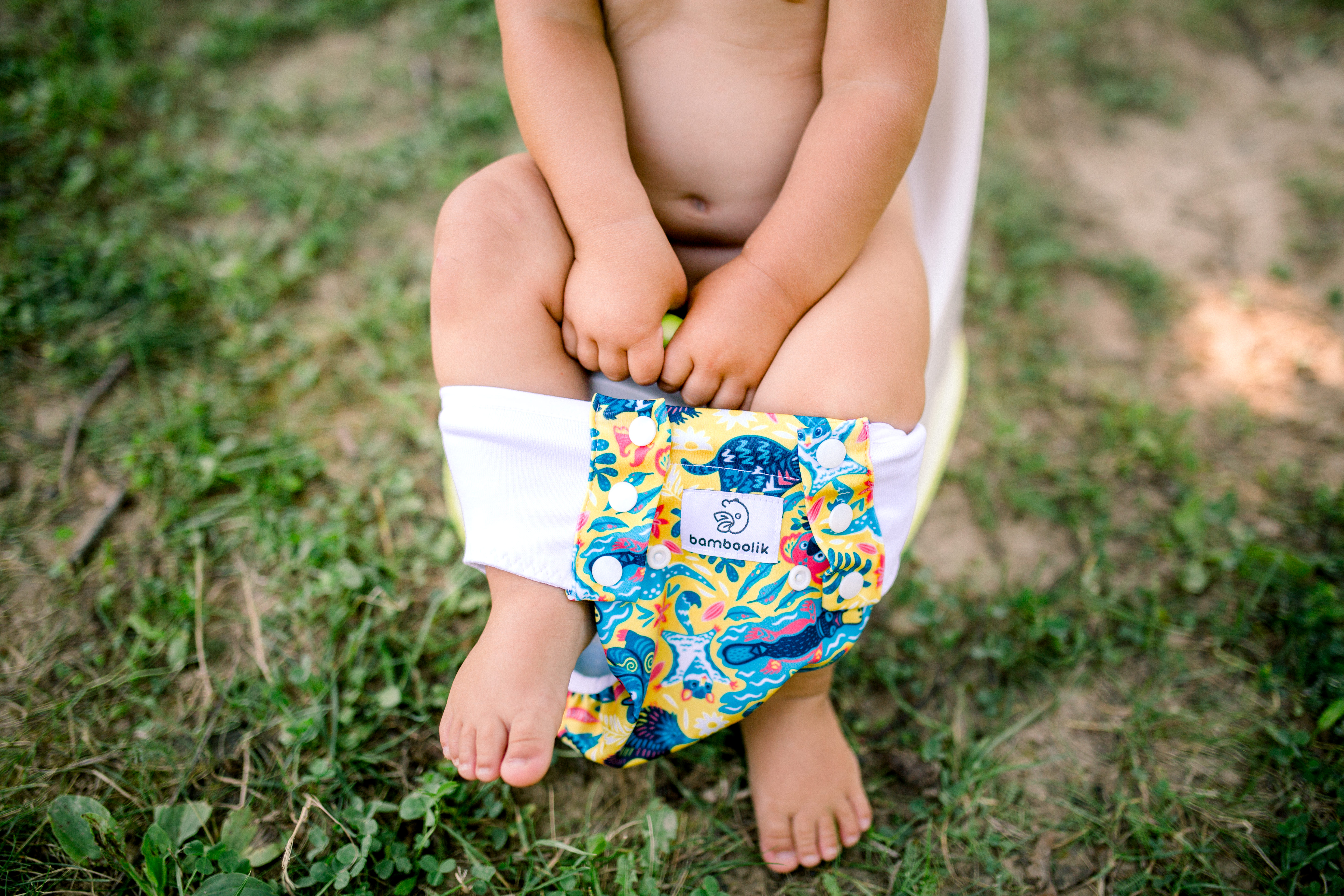As your precious little baby gets older, it looms in front of you: the dreaded potty training. How to tackle this successfully? Should you actively encourage your child to use the potty or should you just wait until they decide for themselves that they’re ready?
An almost horror story at the beginning: The author of this article used to be seated on the potty (at the age of 1) for good 40 minutes and was forbidden to get up until there was something in the potty. My own mom tells me she would not approach potty training like that inymore. That's certainly comforting, but still :-o Luckily for me, I don’t really remember it.
We even heard that some children used to be tied to the potty!
We certainly do not suggest that. Those are practices from the dark past that should be forgotten. For ever.
But what should I do when my toddler refuses to sit down on the potty?
Firstly, we want to say that every child is different. In case you have more kids yourself, you probably already know that (and you most likely don’t even need to read this article as you have your own valid experience with potty training). If you have just one baby, regard the advice of your friends, relatives and acquaintances with a pinch of salt as they might work for you, but they also might not. It’s your own, respectively your baby’s own, unique journey.
What worked for us and our customers?
1) Don’t rush it.
Everyone has their own pace. Every child is different. We have not seen a healthy baby that would not learn to use the potty or the toilet, eventually. It will come, we swear! For some children it comes when they’re 2, for some when they’re 4. So what.
2) Introduce the potty.
Gently, but soon enough. What do we mean by that? Well, if your baby has been using diapers for two years (meaning: their entire life!) and then all of a sudden you come with this strange plastic thing and tell them to ditch the diaper in favour of this thing, what do you reckon will be their response? Children, especially at such a young age, love their habits and rituals and don’t want to give them up!
We recommend introducing the potty slowly, but pretty soon – around the age of 1 (the condition being that the child is able to sit upright on the potty without support). Just show them the potty, tell them what it is for, but don’t force them to use it, do not tie them to it ;-)
It’s all about your toddler getting to know the potty and its purpose.
3) Elimination Communication.
The most natural method! It could be practiced just partially, for number two (that is usually much easier to predict :-))
Most of us in Bamboolik used to practice this method with our kids and are happy to report that it actually works.
Here’s 1 year old Max, whose mother told us:

“Thanks to Elimination Communication, I just don’t have to deal with potty training at all! The only difference is that I used to hold him over the potty when he was a tiny baby, now he sits there on his own.”
4) Open bathroom doors policy at home.
As awkward as it may sound, this actually helps a lot! Your toddler follows you everywhere anyway, just use it to your advantage :-)
The idea is that in case your child has never seen you go to the toilet, how could they know that you don’t do it in a diaper, too? Children love to imitate you, so just let them!
5) Training Pants.
Great help when you need some kind of back-up for a toddler that has already started potty training but they’re not quite there yet. We would stay away from regular diapers here as it might feel like a step backwards. It’s easy to get rid of diapers in summer or in hot climate when you can let your children run around pant-less, but in cold weather, you would want to have some “safety layer”, so to speak. There are different kinds of Training Pants on the market, we like the kind that doesn’t require taking off the baby’s clothes (including shoes) when wet – the type that enables you to undo them and pull them through the legs to change.
On the other hand, what should you NOT do? What might be counterproductive when it comes to potty training?
1) Sit your baby on the potty in front of TV.
Yes, sure, it might help them sit still. However, this might create a new problem because children are creatures of habit! And what will you do outside or at your friend’s house when it’s not possible to play your kid’s favourite TV show?
2) Outer motivation, such as a potty that plays a jolly melody when the child goes into it.
I have a very personal experience here – I forgot to pack a potty for one summer at my family’s country house, so I bought a new one in our little village. They only had a potty with a playing device (that I didn’t even notice, to be honest). My son was two and very used to the potty at the time, but he got so startled by the melody the first time he used this potty that he refused to sit on it for the rest of that summer. I tried to fix it by ripping out the batteries and showing my son that it doesn’t make any noises anymore but even that didn’t help as my son had already decided to boycott that potty altogether.
3) Don’t press on it.
We know every healthy child learns to use the potty someday. Some kids might skip the potty phase and go straight to the “big” toilet. No big deal. Don’t push your child. They will push themselves, when the time comes :-)



